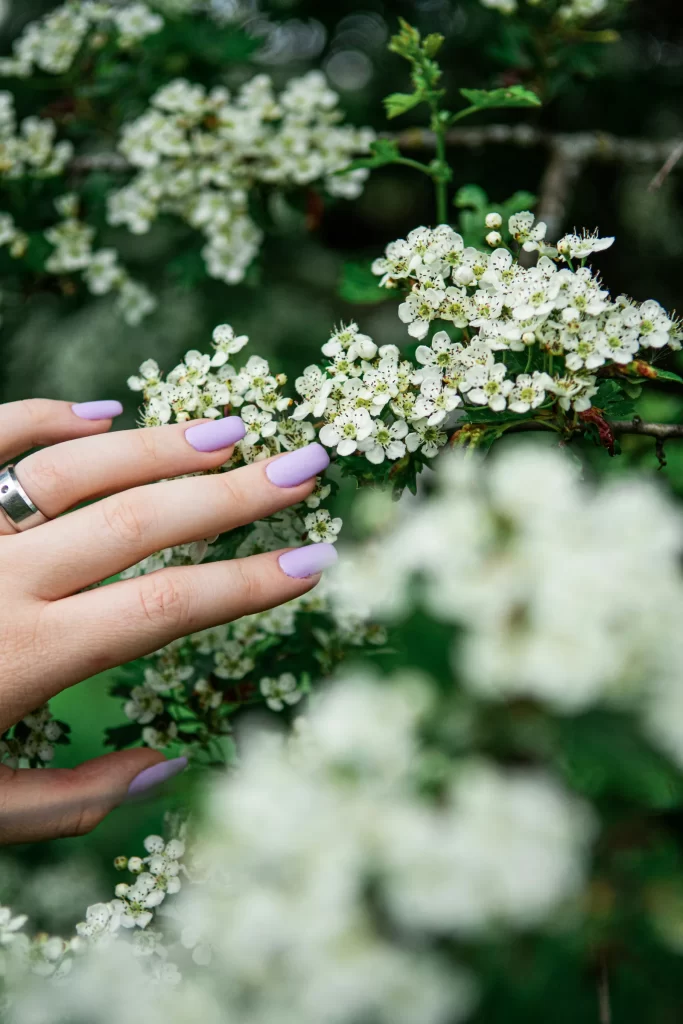
Dip Powder Nails Are Your Ideal Mani That Can Withstand Chips If you were to make a wish list for the perfect yet straightforward manicure, it may resemble this: bright color, strong hold, resistant to chips, and kind to the cuticles and nail beds. Even though they are long-lasting and offer a limitless canvas for nail art and design possibilities, gel and acrylic nails often lack gentleness. In contrast, regular nail polish has a maximum shelf life of eight days. Does the ideal mani exist then? Maybe. Dip powder nails can help with that.
Celebrity instructor and manicurist Julie Kandalec, who regularly works with Jessica Chastain and Camila Cabello, describes dip powder manicures as a layering technique in which colored powder is sandwiched between resin and sealed with a top coat. The end effect is a deeply pigmented nail color that won’t damage your natural nail beds or chip off for weeks.
If that has whetted your appetite, think of this as your manicure beginner’s manual. See how the professionals explain all you need to know about dip powder nails, from how they operate to their benefits and drawbacks.
The Operation of Dip Powder Nails Dip Powder Nails Are Your Ideal Mani That Can Withstand Chips
The procedure is not that complicated. Your nail technician will apply a base coat and a bonder to the cleaned and prepped nails before dipping the powdered acrylic. You can brush off extra powder and dip your nails again and again to achieve the thickness and color you want. Prior to using the activator to cure the nail, you will need to wait a few minutes, ranging from two to five minutes, for the substance to solidify. A top coat is then applied to seal everything.
The Advantages
The longevity and resistance to chipping of dip powder manicures are its primary advantages. Your dip powder manicure should last anywhere from two weeks to a full month, according to Kandalec. Additional advantages, according to dermatologist Hadley King, MD, of New York City, are its accessibility—you can DIY with the various dip solutions that are sold or visit a nail salon for treatment. Additionally, UV light is not required to cure the nails into place.
The Drawbacks
As King and Kandalec both point out, the difficulty of taking off dip powder nails is a drawback to their durability. Your nail beds may sustain serious harm if done incorrectly.
Additionally, you should think carefully about how your salon handles powder canisters. According to Kandalec, even if your hands and nails have been sterilized beforehand, you run the danger of getting infected if your technician dips your finger into the same container as other people. Furthermore, she notes that it might be challenging to sanitize your hands in a salon setting and that bacteria can still be airborne. She advises technicians to either use powder for this or to transfer a tiny quantity of product to a different container that you can dip your finger into. When you’re finished, they ought to discard the surplus rather than returning it to the original container.
King warns that an allergic reaction could occur, so to be sure you won’t be sensitive to the powder, you might wish to undertake a patch test. Additionally, accuracy in application and maintenance is necessary to avoid an overly bulky final product or the necessity for you to fill them in.
Gel vs Dip Powder Nail Polish
As was previously mentioned, a UV lamp is not necessary for dip powder nails to cure. Rather, all you have to do is apply a top coat and activator to set it. In addition to being significantly thicker than gel nails, dip powder nails may also stay longer.
Acrylic vs. Dip Powder Nails
Although dip powder nails and acrylic nails have many characteristics, Kandalec claims that the application method is the primary distinction between the two.
She explains that dip powders work by putting colored powder layers on the nail in between resin layers, which are then sealed and activated with a top coat. You keep doing this until you achieve the thickness, color, and shape that you want. To create a semi-liquid product for acrylic nails that can be shaped and patted into the nails to get your desired design and color, you combine a liquid and a powder. Before being shaped into the exact shape you desire, it hardens in around three minutes.
Do It Yourself Dip Powder Nails
Although you can buy a lot of dip powder products and starter kits, Kandalec advises against doing it yourself. She claims that the risks to your health are reduced when you have them done by a licensed nail technician using salon-quality supplies.
“The products you are getting [from] online distributors like Amazon, Aliexpress, etc. have probably not been tested if you are doing it at home,” she explains. “They have the ability to cause serious problems in a short amount of time.”
To ensure that your new mani lasts as long as possible, she continues, a skilled professional will know how to keep the product off the skin and know the ideal curing period. Furthermore, it is imperative that a professional work with sterilized instruments.
How to Take Out
Kandalec claims that removing dip powder off nails entails bathing them in acetone to dissolve them, much like gel polish removal. Before soaking the remaining product in acetone for around fifteen minutes, your nail technician will use a nail file to smooth off any powder that may have gotten on your nails. After then, they’ll carefully remove the surplus with a tool or buffer of some kind.
Is it secure?
Yes, as long as you apply and remove the dip powder carefully, it is completely safe for your natural nails. Kandalec asserts, “Damage originates from the person, not the product.”
Leave a Reply